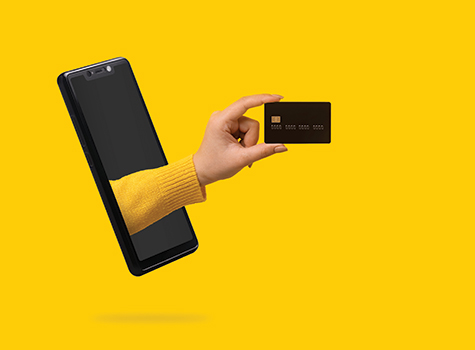By Rupa Pereira

What would you rather be? A depositor or borrower?
It depends, if benefits of borrowing outweigh benefits of lending, borrowing is preferred. Such was the case this past decade when historic low interest rates deterred savers and encouraged borrowing – spurring home buying, car purchases, student loans and high-end purchases. The “Buy Now Pay Later” phenomenon took off during the pandemic and is still strong.
You may be familiar with US Debt ceiling. This is not just a national debt issue, though, as we’re grappling with it at a household level, too. We have a spending problem.
Pre-pandemic, credit card debt was $927 billion. As of 2023, credit card debt is $50 billion higher at $986B whereby 46 percent of people carry personal debt from month to month.
You may ask – how may this be applied to me?
In more ways than one:
We earn so we can spend. One of the golden rules of financial planning is never spend more than you earn. Yet, with the ease of plastic cards, it’s a paywave here, a swipe there and those generous credit limits appear to be an extension of our earning potential. Therein lies the problem.
As of May 3rd, 2023 the Federal Reserve Bank has raised the benchmark interest rate to 5.1 percent, the highest it has been since 2007, to stem rising inflation. This directly affects the prime rate on your credit card and the mortgage interest rate.
If you’re one of those that pay their credit card bills on-time in full each month, the APR or the Fed benchmark interest rate doesn’t mean much to you.
But if you carry a balance and pay the minimum amount, your credit card’s APR rate will likely increase affecting your payments. Suppose you have a $4000 credit balance and current interest rate is 20 percent. Making only a minimum payment of $80 per month will take nine years to pay off your credit card. This is the compounding effect at work and at a higher cost of capital. The effects are devastating.
Key takeaways:
1. Balance your outflows to inflows – at least every quarter. If you’re bottom-line number is in the red – after tallying your bills and recurring payments with your income, then it’s time to address categories of overspend – impulse buying, an expensive hobby, or eating out too often?
2. Try keeping your plastic card at home and practice paying with cash when going grocery shopping – have a shopping list and cash on hand. This limits impulse spending due to the inherent inconvenience.
3. Maintain an envelope for your top spending categories – to rein in spending. This will also help in monitoring your cashflow at the end of every month.
4. Watch your debt-to-income ratio. Experts recommend not more than 36 percent of your gross income going to paydown all your monthly debt payments. Anything above and it teeters into a default.
A few debt payoff strategies:
1. Snowball method: Start by paying off the smallest debt first, while making minimum payments on other debts. Once the smallest debt is paid off, move on to the next smallest debt, and so on.
2. Avalanche method: Focus on paying off the debt with the highest interest rate first, while making minimum payments on other debts. Once the highest interest debt is paid off, move on to the next highest interest debt, and so on.
3. Balance transfer: Transfer high-interest debt to a credit card with a lower interest rate. This can help you save on interest and pay off debt faster.
4. Debt consolidation: Combine multiple debts into one loan with a lower interest rate. This can simplify your debt repayment and potentially save you money on interest.
Since this article is targeted towards women who primarily manage household finances – and the minutiae, next time you’re at the cashier counter in a department or retail store and you’re lured with an offer to open a credit card for a quick discount – stop and think about the true cost of this discount.
Poetically speaking:
Plastic cards, a trap so sweet,
They promise the world but come with a fee.
A swipe here, a swipe there,
Before you know it, you’re in despair.
The debt piles up, and interest rates soar,
Minimum payments, but what’s in store?
A vicious cycle, hard to break,
It’s time to act, for our own sake.
The credit card debt crisis, it’s no joke,
Affecting millions, a financial yoke.
The stress it brings, the sleepless nights,
We need a plan, to put things right.
Living beyond our means, we’ve lost control,
The cost of convenience, taking its toll.
But it’s not too late, we can turn it around,
By taking small steps and getting unbound.
A budget, a plan, a financial goal,
A little discipline, to keep us whole.
We can break free, from this debt trap,
And regain control, without any flap.
It won’t be easy, but it’s worth a try,
To ease the burden, and wave debt goodbye.
Let’s start today, and take a stand,
For a brighter financial future, and a better land.
Rupa Pereira is the owner and lead financial advisor at FWJ Planning, an investment advisory and planning firm registered in NC. As an enrolled agent, she’s also authorized by IRS to represent her clients on tax-matters.
Contact: [email protected].



